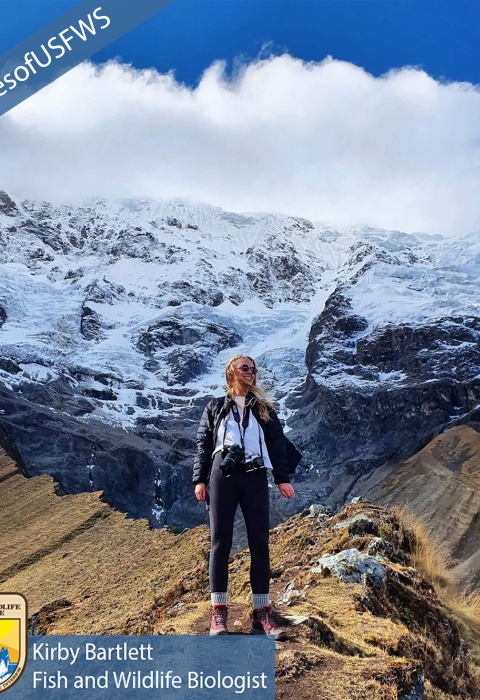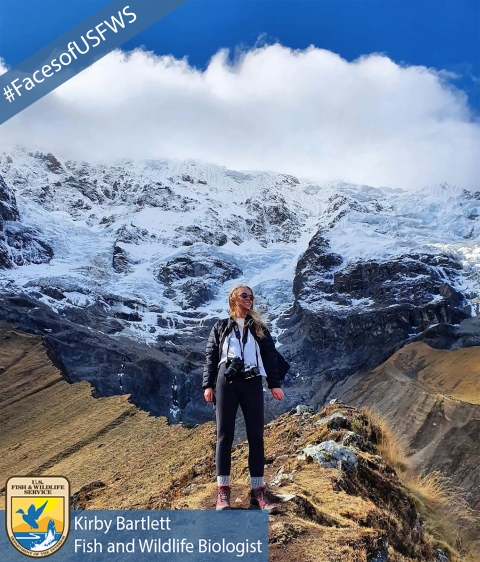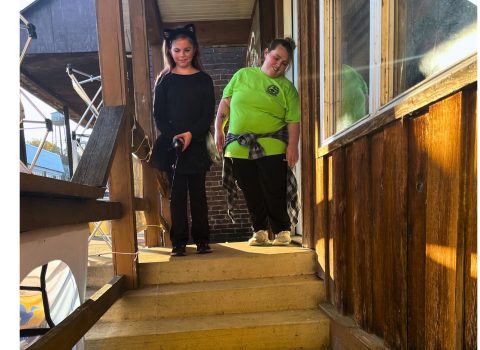By Olivia Beitelspacher, public affairs specialist
Meet one of our newest biologists Kirby Bartlett! Kirby discusses her path towards a career with the Service and her experience as a Directorate Resource Fellow (DFP). Learn more about Kirby and her projects in the latest Faces of the U.S. Fish and Wildlife Service interview.
Olivia Beitelspacher: Welcome to the U.S. Fish and Wildlife Service, Kirby! What role do you play within the agency?
Kirby Bartlett: I am a Fish and Wildlife Biologist working to further the U.S. Fish and Wildlife Service’s mission to conserve and protect endangered species. I do this primarily through consultations with federal agencies on proposed projects they are involved with that may impact species listed under the Endangered Species Act.
OB: Where did you go to school and what did you study?
KB: I began my education at Cabrillo Community College in Santa Cruz, CA. I then transferred to California State University, Monterey Bay where I got my Bachelor of Science in marine science with a minor in statistics. In June 2020 I received my master’s degree from University of California, Santa Barbara’s Bren School of Environmental Science and Management, where I specialized in Coastal Marine Resources Management and Economics and Politics of the Environment with a focus in Environmental Data Science.
OB: We’re so glad to have you aboard! What led you to a career with the U.S. Fish and Wildlife Service?
KB: I recognized during my undergraduate education that I want to influence wildlife conservation on a broadscale, and the U.S. Fish and Wildlife Service is at the forefront of protecting and recovering species. Furthermore, I am very excited to work in the Ventura Fish and Wildlife Field Office because I grew up in Santa Cruz, California and I have a special love for the species of the central and southern California coastline.
OB: It’s great that you have a personal connection with the species you’ll be working with. It really makes the work even more meaningful! Do you have a conservation hero?
KB: A conservation hero of mine is Dr. Sylvia Earle, she is an amazing champion of marine conservation and is an engaging storyteller. Sylvia has inspired so many people to study marine science and she paved the way for many women who have been my personal mentors.
OB: It’s so wonderful to hear that you were inspired by such a conservation champion. Is there a particular project from your career or schooling that makes you really proud?
KB: I am proud of the USFWS Directorate Resources Fellowship Program (DFP) project I completed during the summer of 2019. I created a range wide distribution map for the threatened bull trout. To achieve this, I collaborated with over 40 partners during the 10-week project to map out what streams have bull trout in them. The map is now available online and is being used for conserving bull trout! The DFP program is what made me fall in love with the USFWS, and it is gratifying to know the work I am doing is making a difference for threatened and endangered species.
OB: That is so impressive! The DFP program truly provides students with great opportunities to make tangible impacts in conservation and further the mission of the Service. So, when you’re not working, how do you like to spend your free time?
KB: I love surfing, tide pooling, freediving, and essentially anything that involves a body of water.
OB: What fun ways to spend time outdoors! And lastly, do you have a hidden talent?
KB: I am not quite at the point where it would be considered a “talent”, but I really enjoy analog photography. I love capturing photos and then having to wait to see what they look like; it is always a great surprise to see how they turn out.
OB: I’d love to see some of your photos sometime! Thank you Kirby!



